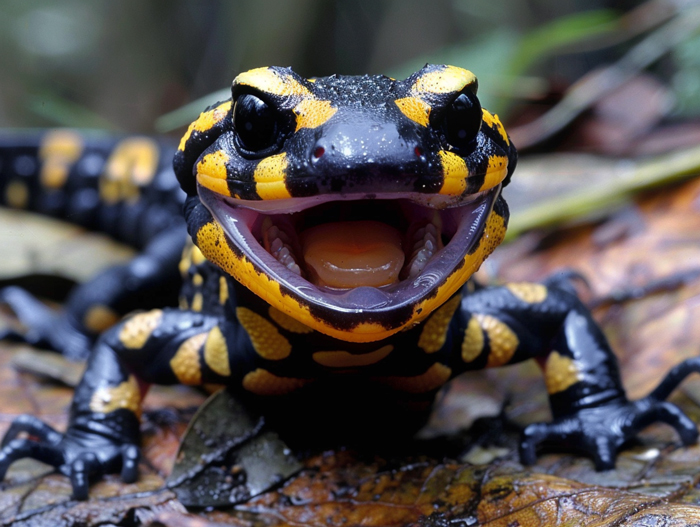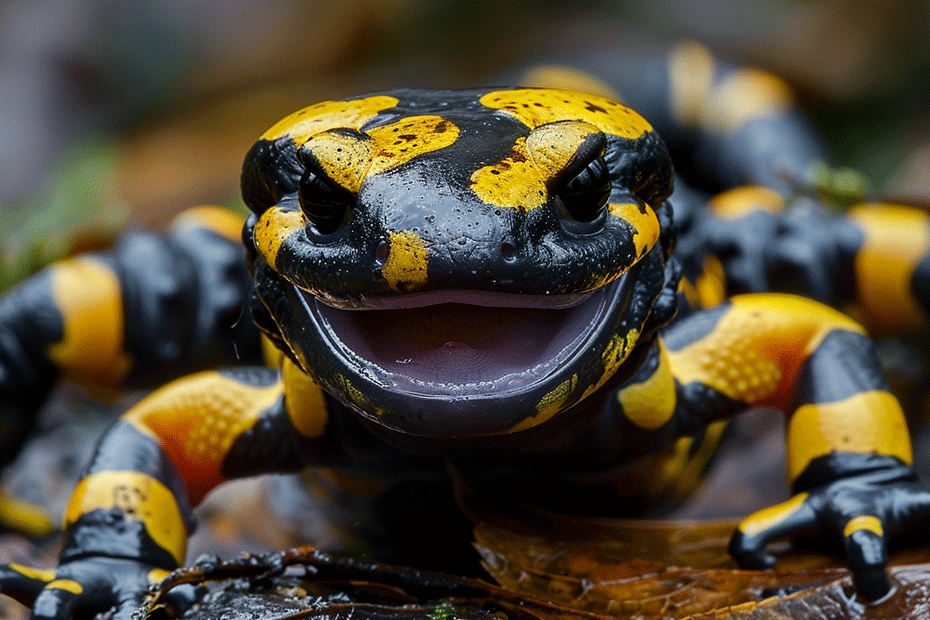Curious about salamanders and their dental situation? Wondering if these amphibious creatures have teeth? In this text, we’ll jump into the intriguing area of salamanders and explore whether or not they are equipped with these tiny structures.
Salamanders are intriguing creatures with unique features that set them apart from other animals. Teeth play a crucial role in the lives of many species, but do salamanders rely on them for survival? Let’s uncover the truth behind this aspect of their anatomy.
Stay tuned as we uncover the mystery of salamander teeth and shed light on whether these amphibians use them for hunting, defense, or any other important functions in their daily lives.
Key Takeaways
- Salamanders have unique teeth that lack enamel and are cone-shaped for capturing prey.
- They possess the ability to regenerate teeth throughout their lives, which is vital for their feeding habits.
- Different salamander species exhibit varying tooth structures, reflecting their diverse diets and hunting strategies.
- The presence and features of salamander teeth have significant ecological implications, impacting prey capture, dietary adaptations, food chains, and evolutionary studies.
- Understanding salamander teeth is crucial for conservation efforts and ecosystem monitoring to protect these amphibians.
Anatomical Features of Salamanders

Tooth Structure in Salamanders
- Salamanders have teeth, but not like typical mammalian teeth.
- Their teeth lack enamel and are cone-shaped for gripping prey.
- These teeth are located on the upper jaw, helping in prey capture.
- Salamanders can regenerate teeth throughout their lives, a unique ability.
- New teeth replace lost or damaged ones within a short period.
- This continual regeneration is crucial for their feeding habits.
Dig deeper into the intriguing area of salamanders with their intriguing anatomical features. Explore their tooth structure and regeneration abilities to uncover the marvels of these amphibious creatures.
Types of Salamanders with Teeth

Salamanders with Well-Developed Teeth
- Northern Red Salamander:
- Known for its robust teeth structure
- Northern Two-Lined Salamander:
- Features well-defined teeth suitable for its diet
- Eastern Red-Backed Salamander:
- Shows reduced teeth
- Marbled Salamander:
- Lacks visible teeth
- Tiger Salamander:
- Exhibits varying degrees of tooth presence
Implications of Salamander Teeth on Ecology

When considering the role of salamander teeth in ecology, it’s essential to understand how these specialized dental structures influence the behavior, diet, and overall survival of these amphibians. Here are some key implications to consider:
1. Prey Capture
- Salamanders with well-developed teeth, like the Northern Red Salamander, are adept at capturing a variety of prey, including insects, small fish, and even other amphibians.
- The presence of sharp, pointed teeth enables salamanders to grasp and secure their prey effectively, contributing to their success as predators in their ecosystems.
2. Dietary Adaptations
- The variation in tooth morphology among different salamander species reflects their diverse diets. Species with reduced or absent teeth may rely more on other feeding strategies, such as suction feeding or swallowing prey whole.
- For example, the Marbled Salamander, which lacks visible teeth, primarily consumes small invertebrates like worms and insects, illustrating how tooth structure aligns with dietary preferences.

3. Impact on Food Chains
- Salamanders play a crucial role in ecosystems as both predators and prey. Their teeth not only affect their own feeding behaviors but also influence the dynamics of food chains within their habitats.
- Changes in salamander populations, driven by factors such as habitat loss or pollution, can have ripple effects on the entire ecosystem, highlighting the interconnectedness of species relationships.
4. Evolutionary Significance
- The evolution of salamander teeth offers insights into their evolutionary history and adaptations to different environments over time.
- Studying the diversity of teeth structures among salamanders can provide valuable information about their phylogenetic relationships and the selective pressures that have shaped their oral anatomy.
- Understanding the ecological implications of salamander teeth is essential for conservation efforts, as changes in tooth morphology or function can indicate shifts in habitat conditions or resource availability.
- By monitoring dental features in salamander populations, researchers can gain valuable data for ecological assessments and make informed decisions to protect these important amphibians.
Conclusion
Salamander teeth play a crucial role in their ecological niche, influencing behavior, diet, and survival. The diversity in tooth morphology reflects unique dietary adaptations across species, impacting food chains and ecosystem dynamics. By studying the evolution of salamander teeth, we gain valuable insights into their evolutionary history and ability to adapt to various environments. Understanding these implications is vital for conservation efforts and monitoring habitat conditions for these fascinating amphibians.

Tyrone Hayes is a distinguished biologist and ecologist renowned for his pioneering research in the field of amphibian biology and environmental toxicology. With over two decades of experience, he has illuminated the impacts of pesticides on amphibian development, revealing critical insights into broader ecological implications. Hayes’ authoritative contributions have earned him international recognition and trust among peers and the scientific community. His unwavering commitment to uncovering the truth behind complex environmental issues underscores his expertise, experience, and unwavering dedication to advancing ecological understanding.
